- Home
- Michael Korda
Hero Page 9
Hero Read online
Page 9
Close as was the relationship between Lawrence and Feisal, Lawrence’s intense admiration for Auda is a constant theme in Seven Pillars of Wisdom, not surprisingly, since they had many traits in common: physical courage, hardiness, cool judgment under fire, indifference to danger, a flamboyant gift for the theatrical side of warfare, and a magnetic attraction that drew hero-worshippers to them and made them natural leaders. Auda was the more bloodthirsty of the two; he reveled in killing his enemies, and had been known in his younger days to cut out the heart of someone he had killed and take a bite out of it while it was still beating—though, as James Barr points out in Setting the Desert on Fire, in that respect Auda was merely an old-fashioned traditionalist, since this had been, in the good old days, an accepted custom in desert blood feuds.
Lawrence’s description of Feisal’s camp at Wejh during February and early March 1917 makes it clear that the majority of his men were doing nothing except lounge around, while Feisal sought to resolve blood feuds and to win the loyalty (or at least the neutrality) of the sheikhs of the tribes and clans to the north. This involved endless negotiations and the exchange of “presents,” which in practice meant payment in gold sovereigns, and promises of more to come. The British supplied the gold, andalso, to the great amusement of the Arabs, two armored cars, and a variety of other vehicles, as well as drivers from the Army Service Corps, and a naval wireless station powered by a generator. The encampment was spread out and enormous, since each tribe and clan wanted its tents to be as far away from the others as possible, and included at its center a tented bazaar, or marketplace. Lawrence made a point of walking everywhere barefoot, so as to toughen the soles of his feet. He lived in comparative opulence in Feisal’s camp, on a raised “coral shelf” about a mile from the sea, where Feisal maintained “living tents, reception tents, staff tents, guest tents,” and the tents of the numerous servants. It was not only with gold and honeyed words that Feisal sought to impress the tribal leaders, but also with his impressive surroundings, as befitted a prince and a son of the sharif of Mecca. The number and size of his tents, the layers of priceless carpets, and the endless banquets—these were all necessary accompaniments if he was to move his army north toward Damascus.
For the moment, neither Jaafar’s “regulars” nor Auda’s tribesmen had much to do. Such action as was taking place consisted largely of raids inland to damage the railway line to Medina, and these were carried out by Newcombe, Garland, and Lawrence, accompanied by small numbers of tribesmen to engage the Turks if they appeared. The Turks were determined to repair the railway line whenever it was broken—and since the line had originally been intended to run all the way to Mecca, they had no shortage of rails stored in Medina with which to repair it.
Medina continued to be the focus of everybody’s attention. The Turks were determined to hold on to it; the army of Abdulla was ensconced to the north of the city in Wadi Ais; Feisal still harbored thoughts of advancing from Wejh to attack it in collaboration with Abdulla; Colonel Brémond was being urged on by cables from Paris to persuade the Arabs to attack Medina at once. Early in March, the partial interception of a message from Jemal Pasha to Fakhri Pasha, which seemed to call for the evacuation of Medina and the transfer of the troops there to Gaza and Beersheba, set off a panic. General Murray, in Cairo, had been informed it was Prime Minister David Lloyd George’s personal wish that he shouldattack Gaza again, and he was preparing to do so with some reluctance, since he was also warned at the same time not to expect any additional troops, and even that he might have to send more of his units to France. The addition of two or three more Turkish divisions on the Gaza-Beersheba line would almost certainly prevent an attack, so it became imperative that either Medina should be taken, or the railway should be cut off once and for all so no Turkish troops could be transferred north.
Since his nominal superior Colonel Newcombe was away dynamiting railway tracks, Lawrence decided to ride from Wejh to Wadi Ais to inform Abdulla of what was happening—and, perhaps more important, what was expected of him, since, in Lawrence’s words, “he had done nothing against the Turks for the past two months.” Lawrence was ill with dysentery, “feeling very unfit for a long march,” but despite this he set off, with Feisal’s approval and a handpicked escort of tribesmen, for Wadi Ais, a distance of about 100 miles as the crow flies, but more on the ground. His traveling party might have made him feel uneasy had he not been too sick to think about it, since it was ill-assorted, consisting of men from different tribes. He was unable to ride more than four or five hours at a stretch; the pools of water and the few wells on the way had turned salty, a cause for some concern; boils on his back were giving him considerable pain when he rode; and the landscape, which was rugged, hilly, and flinty, made it necessary from time to time to dismount and walk the camels up zigzagging slippery trails of worn stone. In the distance, huge and fantastic rock formations loomed. Finally, the landscape changed: there was grass for the camels in a narrow valley, and the men camped for the night under the lee of a “steep broken granite” cliff. Lawrence was suffering from a headache, a high fever, occasional fainting fits, and attacks of dysentery that left him light-headed and exhausted.
He was woken by a shot, but thought nothing of it at first, since there was game in the valley; then one of the party roused him and led him to a hollow in the cliff, where the body of one of the Ageyl camel men lay. The man had been shot in the head, at close range. After some initial confusion and discussion of the ethics of blood feuds, it was agreed thathe had been shot by another of the party, Hamed the Moor, following a brief quarrel between them. Lawrence crawled back to where he had been lying, beside the baggage, “feeling that this need not have happened this day of all days when I was in pain.” A noise made him open his eyes, and he saw Hamed, who had put his rifle down to pick up his saddlebags, no doubt preparing to run away. Lawrence drew his pistol, and Hamed confessed to the murder. At this point the others arrived, and the Ageyl’s fellow tribesmen demanded, as was their right, blood for blood. Lawrence, whose head was pounding, gave some thought to this. There were many Moors in the army, descendants of Moroccans who had fled to the Hejaz when the French took over their country, and if the remaining two Ageyl shot Hamed there would inevitably be a blood feud between the Moors and the Ageyl. Lawrence decided that as a stranger, a non-Muslim, and a man without a family, he could execute the Moor without creating a blood feud that might spread through the army. His traveling companions, after some discussion, agreed.
He marched Hamed at gunpoint into a narrow crevice in the cliff, “and gave him a few moments’ delay, which he spent crying on the ground,” then “made him rise and shot him through the chest.” Hamed fell to the ground, but was still alive and “shrieking,” as blood spurted from his wound, so Lawrence shot him again. By that time, Lawrence’s hand was shaking so badly that the bullet struck the dying man only in the wrist. Lawrence regained control of himself, moved closer, put the muzzle of his pistol to Hamed’s neck, under the jaw, and pulled the trigger.
That did it. The remaining Ageyl, for whose benefit Lawrence had carried out the execution, buried Hamed’s body, and after a sleepless night Lawrence was so ill that they had to lift him up into his saddle at daybreak.
Lawrence devotes only four paragraphs to Hamed’s execution in Seven Pillars of Wisdom, and some of his biographers give the incident less space or even leave it out altogether; but despite the brevity, the obvious restraint, and the total lack of self-pity, his account clearly represents a turning point in the life of the former Oxford archaeologist and aestheteturned mapmaker and intelligence officer. He does not mention it again, perhaps because—as with so many things that happen in war—leaving it behind and moving on seemed more sensible. The prose in which Lawrence describes the experience, despite a tendency toward a certain florid and archaic quality when he is trying too hard to create the literary masterpiece that he hoped would take its place beside such great books as Moby-Dick, Thus Spoke Zarath
ustra, and The Brothers Karamazov, is in this instance notably spare and lean. Indeed it is one of the places in Seven Pillars of Wisdom where Lawrence succeeds in striking exactly the tone that Ernest Hemingway spent his life perfecting: a shocking event is described in the bare minimum of words, and with no attempt to convey Lawrence’s feelings at killing another human being at close range. It is unlikely that he had none, but whatever they may have been, he does not share them with the reader. In the words of W. B. Yeats, he “cast a cold eye on life, on death,” and passed by.
Perhaps his own illness, and the greater importance in the grand scheme of things of reaching Emir Abdulla as soon as possible with the message about Medina (which, ironically, turned out to be false), helped Lawrence to put the incident out of his mind. But whatever the case, Hamed’s death marks the point at which Lawrence gave up the moral comfort of being a liaison officer, observing events from a distance, and transformed himself into a man of action, leading other men, sometimes to their death; killing Turks when he had to kill them; exposing himself to danger with a lack of fear, or even of caution, that astonished both the Bedouin and the British; and accepting unthinkable pain without complaint.
Shock finally set in, for Lawrence’s description of the next two days of his journey to Wadi Ais has a quality of desert hallucination. His meticulous description of the landscape conveys in its wealth of details a cumulative horror, which reaches a peak when during a rest he throws a rock at one of the party’s camels in disgust at its self-satisfied mastication. At one point Lawrence’s party stumbles across a Bedouin encampment and instead of letting him sleep outside, his host—"with the reckless equality” and hospitality “of desert men"—insists that Lawrence share his tent, so that Lawrence leaves in the morning with his “clothes stinging-full of fiery points feeding on us,” because of the lice and fleas. on the third day, crossing a “broken river of lava,” one of his camels breaks a leg in a pothole—the bones strewn around are mute testimony to the frequency with which this occurs—and Lawrence feels so sick that he fears some well-meaning tribesman will try to cure him, for the only method the Bedouin know is to burn a hole or holes in the patient’s body in a spot which is assumed to be opposite the site of the illness, a treatment often more painful than the disease, or to have a boy urinate into the wound.
At last he found Abdulla, in the process of setting up a new camp in a pleasant grove of acacia trees—as was always the case with Bedouin camps, the men and animals had fouled the old one by paying no attention at all to sanitary arrangements. Lawrence handed over the letters he had been carrying from Feisal, and explained the problem of Medina to Abdulla in his luxurious tent, although Abdulla did not seem much disturbed by or interested in it. Then, Lawrence collapsed in the adjacent tent that was pitched for him.
Lawrence spent about ten days in his tent “suffering a bodily weakness that made my animal self crawl away and hide till the shame was passed.” This surely refers to dysentery, a common enough illness among Europeans living with the Bedouin and unaccustomed to tainted water and unhygienic surroundings. Lawrence’s symptoms may also have been intensified by some degree of what we would now call post-traumatic stress disorder, brought about by the execution of Hamed. In any event, for ten days he rested and tried to recuperate in his stifling tent, drowsing, plagued by flies, and thinking about military strategy. Eventually, he came to the conclusion that any attempt to take Medina would be a mistake. As Lawrence himself put it, he “woke out of a hot sleep, running with sweat and pricking with flies, and wondered what on earth was the good of Medina to us?” In Colonel Lawrence, Liddell Hart bases his claim for Lawrence as a military genius on these sickbed musings in Abdulla’s camp. Indeed the conclusions that Lawrence reached about war, as he set them out in Seven Pillars of Wisdom five years later, define very well the kinds of warfare that big western armies found it so hard to win against through much of the twentieth century, and the first decade of the twenty-first. First of all, Lawrence reached the conclusion that in “irregular warfare” it made no sense to hold or to seize a specific point. The goal was to strike the enemy where he least expected to be attacked, then vanish back into the desert, and to avoid, so far as possible, big battles in which the enemy could put to use his superior firepower and military discipline.
The object, he decided, should be to keep the Turks bottled up in Medina, where they could do no harm, and therefore to restrict, not cut, the railway that was their only line of communication with the rest of the Turkish army. Half-starved and reduced to eating their own transport animals, which were useless to them without forage, the Turks would no longer present a serious danger to Mecca, and could be reduced to exhaustion and impotence by frequent attacks on the railway, which they would constantly have to repair and defend—they would, in fact, be “all flanks and no front.” once Lawrence rose from his sickbed, he had a simple strategy for beating the Turks, not by fighting battles to take the fortresses and towns they held, but by destroying what they could neither easily replace nor defend: locomotives, railway cars, telegraph wires, bridges, and culverts. The Turks would have to spread themselves thin to defend these targets, and it would then be easier to attack and kill small Turkish parties. In short, a war of mobility was needed, a war in which the Arabs would use to the full their possession of camels and the protection of the desert in order to appear where they were least expected, and not anchor themselves in Wejh—or for that matter in Wadi Ais, where Abdulla was making himself too comfortable for Lawrence’s taste.
TURKEY’S LIFELINE
When Lawrence was well enough to stand, he went to Abdulla’s great tent and explained his plans, without eliciting any enthusiasm from Abdulla, who was no more anxious to blow up the railway than he was to attack Medina. A cultivated man who enjoyed poetry and hunting, he had come to Wadi Ais at his brother Feisal’s request, but having reached it and made himself comfortable, he was not about to be prodded into action, least of all by Lawrence, whom he disliked. However, recognizing in Lawrence a reflection of Feisal’s more spirited view of the war (as well as an altogether superior will), he allowed Lawrence to gather a group of his tribesmen, a quantity of explosives, two of the antiquated mountain guns Abdulla had received from General Wingate in Khartoum, and a German Maxim machine gun on a sledge drawn by a long-suffering donkey, and to go out to put his ideas into practice. Abdulla’s cousin Sharif Shakir, an altogether more warlike figure, promised to collect a force of 800 fighting men, to attack whatever Lawrence liked.
On March 26, Lawrence and his advance party of thirty men rode off down Wadi Ais and undertook a three-day march across the desert to a600-foot hill of sand that overlooked the railway station at Aba el Naam. It consisted of two buildings and a water tank, and like most of the Turkish stations, was as stoutly built of stone as a fortress, and garrisoned by nearly 400 troops; but also, like most of them, it had the disadvantage of being surrounded by higher ground, since any railway must be laid when possible on flat ground, and take advantage of valleys. Lawrence was therefore able to approach very close to the station without being seen. Shakir turned up as night fell, but with only 300 men instead of the 800 he had promised; as Lawrence soon discovered, any Arab promises of numbers were best taken with a grain of salt. Still, he was determined to go ahead, and rode on in the dark to the south of the station, where, for the first time in the war, he “fingered the rails … thrillingly,” and planted “twenty pounds of blasting gelatine” under the track, with one of Garland’s improvised trigger fuses, made from the lockwork of an old British army single-shot Martini rifle, with the trigger exposed so that pressure would release it. He put his two guns in position, and placed the Maxim to kill the locomotive’s crew, if they survived the explosion. At daybreak, he started shelling the station, doing considerable damage, especially to the all-important water tank. The crew of the locomotive uncoupled it from the train and began to back it southward toward safety until it ran over the mine and vanished in a cloud of sa
nd and smoke. Although Lawrence’s Maxim gunners had apparently lost interest or patience and abandoned their post, in this first effort thirty Turkish prisoners were taken, and about seventy Turks were killed or wounded; nine more were killed when they tried to surrender and the Arabs shot them anyway. The station and the train caught fire, the locomotive was seriously damaged, and a part of the track was destroyed. For three days all traffic to and from Medina was stopped. Only one of Lawrence’s Bedouin was slightly hurt, so the attack demonstrated his theory about inflicting the maximum damage with the minimum of losses.

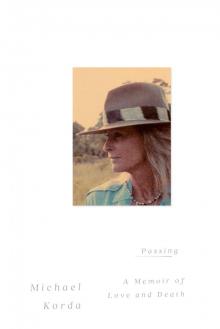 Passing
Passing Another Life
Another Life Clouds of Glory
Clouds of Glory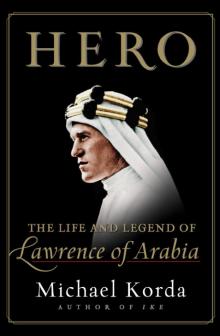 Hero: The Life and Legend of Lawrence of Arabia
Hero: The Life and Legend of Lawrence of Arabia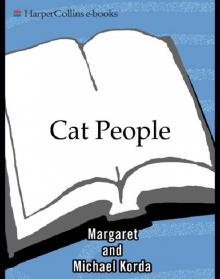 Cat People
Cat People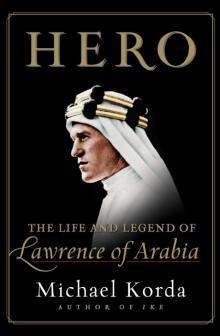 Hero
Hero With Wings Like Eagles: A History of the Battle of Britain
With Wings Like Eagles: A History of the Battle of Britain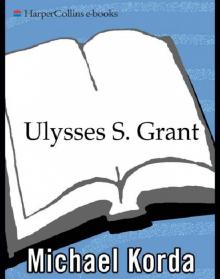 Ulysses S. Grant
Ulysses S. Grant